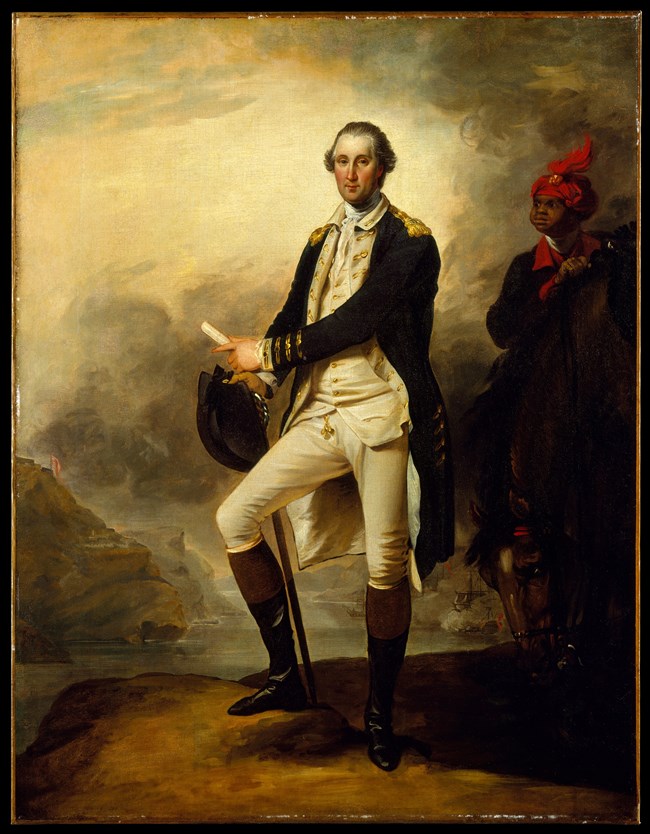
One of the best-known representations of William Lee, Trumbull depicted him wearing a turban based on a European “orientalist” convention associated with Black figures. William Lee (c.1752-1810) – George Washington’s enslaved manservant. In 1768, Washington purchased William Lee from Mary Lee, a wealthy widow.1 Described as “mulatto,” or mixed race, William Lee probably had a white father and an enslaved mother.2 During the American Revolution, Lee’s responsibilities included laying out Washington’s clothes, as well as combing, powdering, and tying back the general’s hair. Lee also delivered messages and maintained the commander-in-chief’s collection of often confidential letters. An excellent horseman in his own right, Lee remained at Washington’s side throughout the war, which John Trumbull and Charles Willson Peale depicted in their paintings. 1. “Cash Accounts, May 3, 1768,” The George Washington Financial Papers Project, accessed August 10, 2020, http://financial.gwpapers.org/?q=content/ledger-1750-1772-pg261. [Original source: The Papers of George Washington Digital Edition, ed. Theodore J. Crackel (Charlottesville: University of Virginia Press, Rotunda, 2008), n2.] |
Last updated: December 22, 2020
